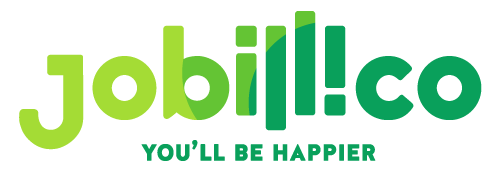Applying SEO Principles to Enhance Your Resume
 Publié le 20 October 2025
Publié le 20 October 2025
Your resume is more than just a rundown of your job history. It’s your personal search engine optimized landing page—the front-facing representation of your skills, credibility, and potential. Recruiters don’t have the time to thoroughly read every resume, and many use ATS software to filter applicants before a human ever gets involved.
That means your resume needs to do more than inform. Instead, it needs to rank. In this article, we’ll explore how fundamental SEO principles can make your resume more visible, impactful, and ultimately more effective in landing interviews. Don’t worry, you don’t need to be an SEO pro to approach your resume with the same intent: to be found, understood, and chosen.
Use Keywords to Speak Recruiters’ Language
Just like Google relies on keywords to understand a page’s content, ATS software and hiring managers rely on specific terms to evaluate resumes. These keywords aren’t abstract concepts—they are the language of the job description. If you’re applying to a marketing role that emphasizes “lead generation,” “conversion optimization,” and “Google Analytics,” your resume needs to mirror that terminology directly.
This doesn’t mean stuffing your resume with buzzwords. It means identifying high-value terms in job postings and weaving them naturally into your content. Mentioning you “managed CRM integrations” when a posting wants “HubSpot experience” might cost you relevance points. Say “HubSpot.” Don’t assume synonyms will do the job.
Tools like Jobscan or even Ctrl+F comparisons can help you match your resume to job descriptions efficiently. Think like a search engine: the closer your language aligns with the search query, the higher your chance of ranking. That alignment also ensures clarity for human readers. If recruiters see the exact terms they’re scanning for, they’ll pause—and that’s your shot.
Optimize Your Resume Headings for Skim-Reading and Relevance
In web SEO, headers like H1s and H2s break down content for users and help search engines index it properly. Your resume should do the same. Clear, standardized section headers like “Professional Experience,” “Education,” “Skills,” and “Certifications” aren’t just conventional—they’re expected. ATS bots scan for them, and recruiters skim them.
Go further: treat your job titles as micro-headlines. Instead of “Marketing Professional,” go for “Digital Marketing Specialist | Paid Ads & SEO Focus.” Combine accuracy with specificity. You can even tweak job titles slightly for clarity. If you were technically a “Growth Executive” but the role matched “Account Manager,” a format like “Growth Executive (Account Management)” ensures alignment with search terms.
Visual hierarchy also matters. Use consistent formatting, bold fonts for roles, italics for dates, and avoid overly designed templates that could confuse ATS parsers. Simplicity improves scanability for bots and humans alike.
Structure Like You Would a Well-Ranked Blog Post
Web content that ranks is clean, scannable, and easy to digest. Resumes should follow suit. Break your content into logical sections, ensure consistency in formatting, and avoid dense paragraphs. If recruiters are bouncing from your resume, it’s often because your content looks like a block of noise.
Avoid overloading your resume with visual noise—no graphics, logos, icons, or overly stylized formatting. These often fail to translate in ATS systems. Use clean lines, standard fonts, and white space. Let your words, not your layout, do the work. And speaking of which, ensure that your summary is the crux of the entire resume. Pack it with keywords and make it count.
Also, align your formatting choices across your entire document. Dates should all sit flush on one side. Job titles should appear before company names if that’s your chosen order—but be consistent. Think of formatting as internal linking: it guides the user smoothly across the page and keeps them reading.
Prove Authority with Certifications and Recognitions
In SEO, high authority backlinks signal credibility. If Wikipedia and Apple are linking to your blog, that means your content is trustworthy. For your resume, that credibility comes from external proof—certifications, awards, features, and affiliations. These elements tell the hiring manager that someone else vouches for your skill.
Don’t relegate this to the bottom of your resume. Certifications like Google Ads, HubSpot, Salesforce, or PMP should be prominently listed. If you contributed to a major publication, got featured on a company blog, or received an internal performance award, include it. However, make sure each inclusion is targeted for that specific job, not just thrown in randomly.
If you completed a bootcamp, published thought leadership content, or spoke at an industry webinar, you’re signaling authority in your field. The more relevant the authority signal is to the role, the more it helps boost your resume’s “ranking.”
Quantify Results Like You’re Reporting Traffic Data
SEO reports aren’t built around actions—they’re built around outcomes. Your resume should mirror that. Instead of describing what you were responsible for, emphasize what you achieved. Numbers create instant credibility.
“Increased blog traffic” is fine. “Increased blog traffic by 72% in 6 months through targeted SEO and content improvements” is memorable. You want recruiters to visualize impact, not just duties. Hence, quantifying your accomplishments sends the message that you realize your work is a part of something bigger and not an isolated set of tasks.
Every bullet point in your experience section should follow a basic format: action + tool/approach + result. This doesn’t mean everything has to be a revenue figure. Efficiency improvements, team growth, project delivery, or engagement rates all work. Think like an SEO specialist: what metrics would prove I moved the needle?
Match Intent by Tailoring to Each Job
One-size-fits-all SEO content rarely ranks. The same goes for resumes. Hiring managers are looking for candidates who match not just the requirements but the intent behind them. If a company is looking for a “data-driven content manager,” show them you’ve lived in spreadsheets and dashboards.
Most importantly, customize your resume for each application. This doesn’t require rewriting everything. Adjust the professional summary, reorder bullet points to highlight relevant achievements, and swap in specific tools or projects mentioned in the posting. Your resume shouldn’t just show that you can do the job—it should suggest you’ve already done it.
Recruiters can tell when you’ve applied effort. So can ATS bots. A tailored resume has better alignment with the job description’s keywords, structure, and tone, and that boosts both visibility and engagement.
Conclusion
Your resume isn’t just a formality—it’s your personal landing page. Like great SEO content, it needs to be strategic, relevant, and conversion-focused. Optimizing your resume with SEO principles isn’t about gaming the system. It’s about aligning with how the system works—and how people think.
Treat your resume as a living document. Update it often. Tailor it constantly. Track which versions get interviews and why. This isn’t about being perfect. It’s about iterating toward what works.
Because in a crowded job market, visibility is everything. And your resume deserves to rank.







